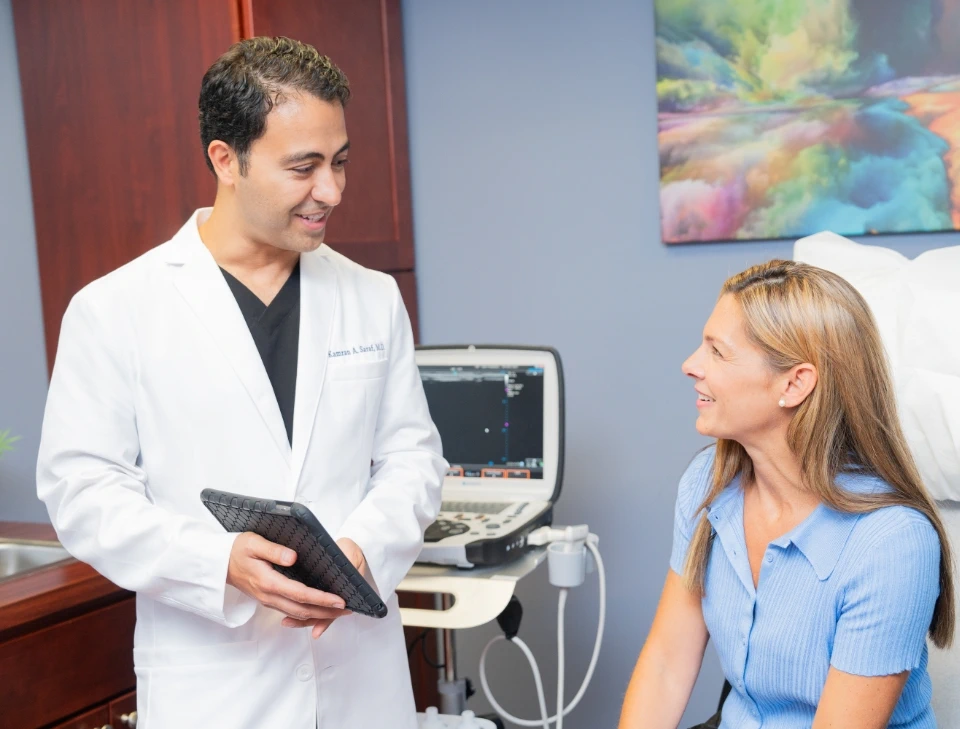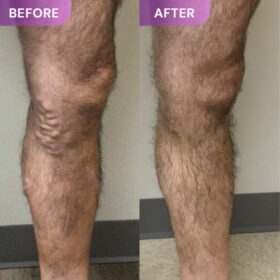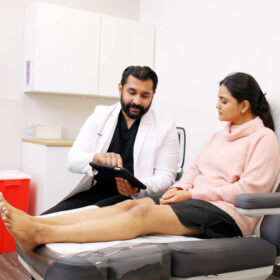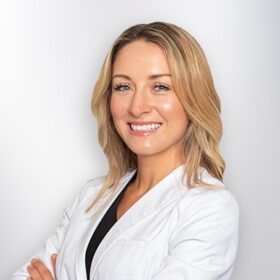Living with varicose veins can present challenges, but it doesn’t mean you have to sacrifice an active lifestyle. At Vein Treatment Clinic, we understand the importance of staying active for overall health, even when dealing with venous issues. In this guide, we share valuable tips and strategies to help you maintain an active lifestyle while managing varicose veins.
But First, What Are Varicose Veins?
Before discussing tips for staying active with varicose veins, let’s briefly define what varicose veins are and how they occur. Varicose veins are enlarged, swollen, and twisted veins that typically appear dark purple or blue. They often develop in the legs and can cause discomfort, pain, and aching, especially after prolonged periods of standing or sitting.
Varicose veins occur when the valves in the veins weaken or fail, allowing blood to pool and cause them to bulge. This usually happens because of chronic venous insufficiency. While genetics play a significant role in their development, other factors, such as age, obesity, pregnancy, and prolonged standing or sitting, can also contribute to their formation.
Tip 1: Choose Low-Impact Exercises
When dealing with varicose veins, choose exercises that promote circulation without putting excessive strain on the veins. Low-impact exercises are ideal as they help improve blood flow without causing additional pressure on the veins. Some excellent low-impact exercises include:
- Swimming: Water provides natural resistance, making swimming an excellent cardiovascular workout without stressing the veins.
- Cycling: Riding a bike is a low-impact exercise that strengthens the legs and promotes circulation while minimizing strain on the veins.
- Walking: Brisk walking is a simple yet effective way to improve circulation and keep the legs moving without causing undue stress on the veins.
Tip 2: Wear Compression Stockings
Compression stockings are designed to provide graduated compression, meaning they are tighter at the ankles and decrease in pressure as they move up the legs. Wearing compression stockings can improve blood flow by preventing blood from pooling in the veins. They can also reduce swelling and discomfort associated with varicose veins, allowing you to stay active.
At Vein Treatment Clinic, we recommend wearing compression stockings during periods of prolonged standing or sitting, such as during long flights or at work. Be sure to consult with one of our board-certified vein doctors to determine the right level of compression and the best type of stockings for your needs.
Tip 3: Elevate Your Legs
Elevating your legs is a simple yet effective way to reduce swelling and alleviate symptoms associated with varicose veins. By elevating your legs above heart level, you help facilitate blood flow back to the heart and prevent blood from pooling in the veins. Whenever possible, take breaks throughout the day to elevate your legs for 10-15 minutes at a time.
Tip 4: Stay Hydrated
Proper hydration is essential for maintaining healthy circulation, especially when dealing with varicose veins. Drinking an adequate amount of water throughout the day helps keep the blood thin and flowing smoothly, reducing the risk of blood clots and promoting overall cardiovascular health. Aim to drink at least eight glasses of water a day and avoid excessive consumption of caffeinated or alcoholic beverages, as they can contribute to dehydration.
Tip 5: Incorporate Strength Training
In addition to cardiovascular exercise, incorporating strength training into your routine can help improve muscle tone and support the veins in your legs. Focus on exercises that target the lower body, such as squats, lunges, and calf raises, as they help strengthen the muscles that surround and support the veins. Building muscle can also improve circulation and reduce the appearance of varicose veins over time.
Tip 6: Practice Yoga or Pilates
Yoga and Pilates are excellent forms of exercise for individuals with varicose veins, as they focus on gentle movements, stretching, and strengthening without putting undue pressure on the veins. Both practices promote flexibility, balance, and circulation, which can help alleviate symptoms associated with varicose veins. Look for classes specifically tailored for individuals with venous issues, or consult with a certified instructor for guidance on modifications.
Tip 7: Maintain a Healthy Weight
Carrying excess weight puts added pressure on the veins in your legs, exacerbating symptoms of varicose veins and increasing the risk of complications. Maintaining a healthy weight through a balanced diet and regular exercise can help alleviate symptoms and reduce the likelihood of venous issues. Incorporate plenty of fruits, vegetables, lean proteins, and whole grains into your diet, and aim for at least 30 minutes of moderate exercise most days of the week.
Tip 8: Listen to Your Body
Above all, listen to your body and pay attention to how it responds to different activities. If you experience pain, swelling, or discomfort while exercising, take a break and allow your body to rest. Pushing through pain can exacerbate varicose vein symptoms and lead to further complications. If you’re unsure about which exercises are safe for you, consult with one of our board-certified vein doctors for personalized recommendations.
Exercise Can’t Treat Varicose Veins, Only Minimally Invasive Vein Treatments Can
While exercise plays a crucial role in managing varicose veins and promoting overall leg health, it’s important to understand that it cannot treat varicose veins on its own. Varicose veins are caused by malfunctioning valves in the veins, and while exercise can help alleviate symptoms and improve circulation, it cannot address the underlying venous insufficiency. For effective treatment of varicose veins, minimally invasive treatments are necessary. At Vein Treatment Clinic, we offer a range of procedures that provide long-lasting relief from varicose veins.
Endovenous Laser Ablation (EVLA)
Endovenous Laser Ablation, or EVLA, is a minimally invasive procedure used to treat varicose veins by closing off the affected vein. During the procedure, a thin laser fiber is inserted into the damaged vein under ultrasound guidance. The laser energy heats and seals the vein, causing it to collapse and be absorbed by the body. EVLA is highly effective and typically performed on an outpatient basis with minimal discomfort and downtime.
Radiofrequency Ablation (RFA)
Radiofrequency Ablation (RFA) is a minimally invasive procedure that uses thermal energy to treat varicose veins. Instead of laser energy, RFA delivers heat through a catheter inserted into the affected vein. The heat causes the vein to collapse and eventually be reabsorbed by the body. RFA is a safe and efficient treatment with high success rates and minimal side effects.
VenaSeal
VenaSeal is a revolutionary vein treatment that uses a medical adhesive to seal off varicose veins. During the procedure, a small amount of medical adhesive is injected into the affected vein, causing it to close and reroute blood flow to healthy veins. VenaSeal is a quick and virtually painless procedure that does not require tumescent anesthesia or compression stockings, making it an excellent option for patients seeking a convenient treatment.
ClariVein
ClariVein is a minimally invasive procedure that combines mechanical agitation with chemical sclerosant to treat varicose veins. During the procedure, a rotating wire is inserted into the affected vein, where it delivers a sclerosant solution that irritates the vein walls and causes them to collapse. ClariVein is performed under ultrasound guidance and offers a high success rate with minimal discomfort and downtime.
Ambulatory Phlebectomy
Ambulatory Phlebectomy is a minimally invasive surgical technique used to remove large varicose veins through tiny incisions in the skin. During the procedure, the vein is carefully dissected and removed using special hooks or forceps. Ambulatory Phlebectomy is typically performed under local anesthesia and allows for precise removal of varicose veins with minimal scarring and recovery time.
Sclerotherapy
Sclerotherapy is a minimally invasive procedure used to treat smaller varicose veins and spider veins. During the procedure, a sclerosant solution is injected directly into the affected veins, causing them to collapse and fade from view. Sclerotherapy is a quick and effective treatment option that can be performed in-office with minimal discomfort and downtime.
Contact Us for Minimally Invasive Vein Treatments
While living with varicose veins may present challenges, it doesn’t mean you have to give up an active lifestyle. By following the tips and strategies mentioned in this article, you can maintain your fitness routine while managing symptoms and promoting overall leg health.
At Vein Treatment Clinic, we’re here to support you every step of the way on your journey to a healthier lifestyle. We also offer a comprehensive range of minimally invasive vein treatments that provide safe, effective, and long-lasting relief from varicose veins. Contact us to schedule a consultation with one of our experienced vein doctors today.













